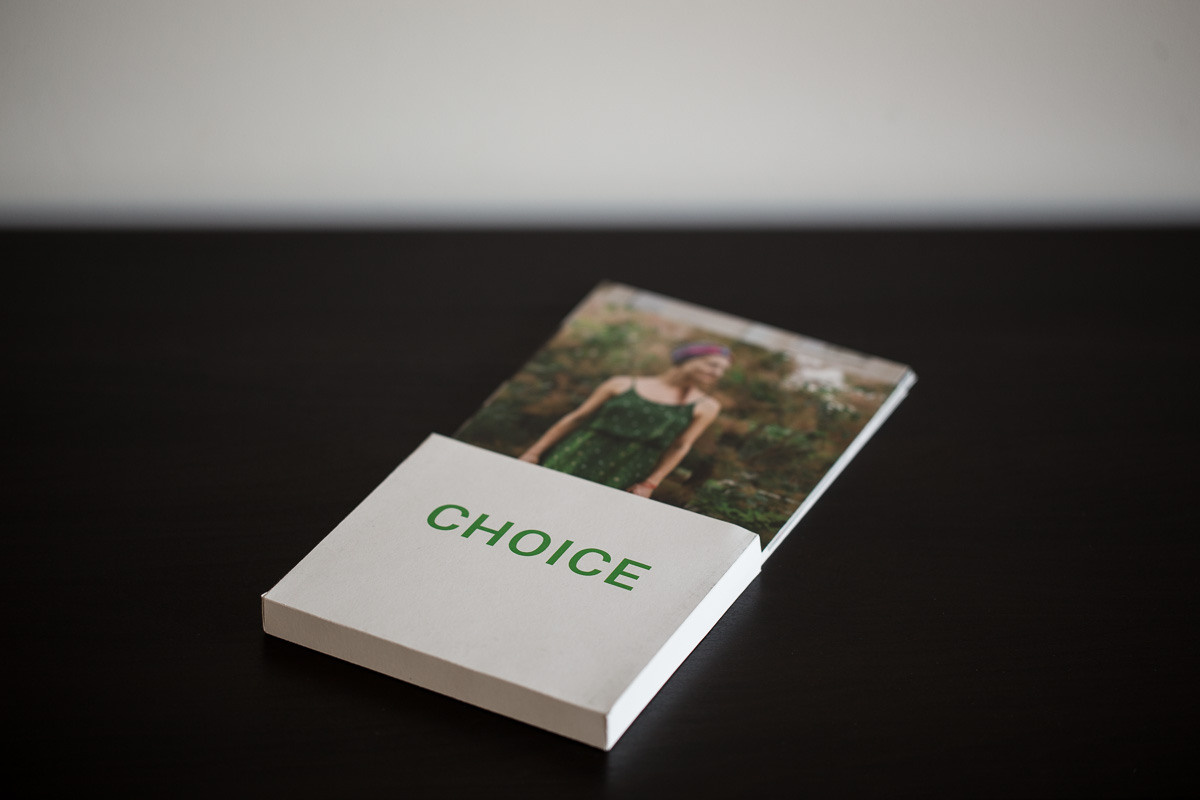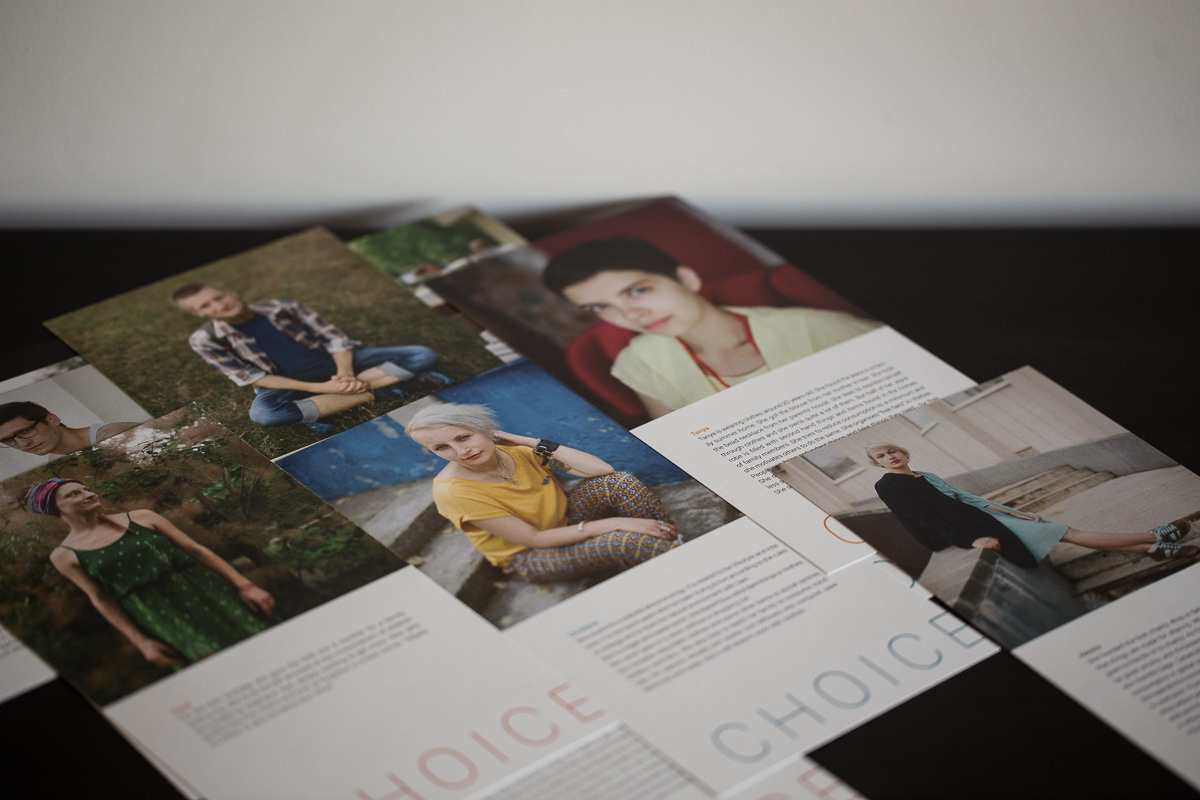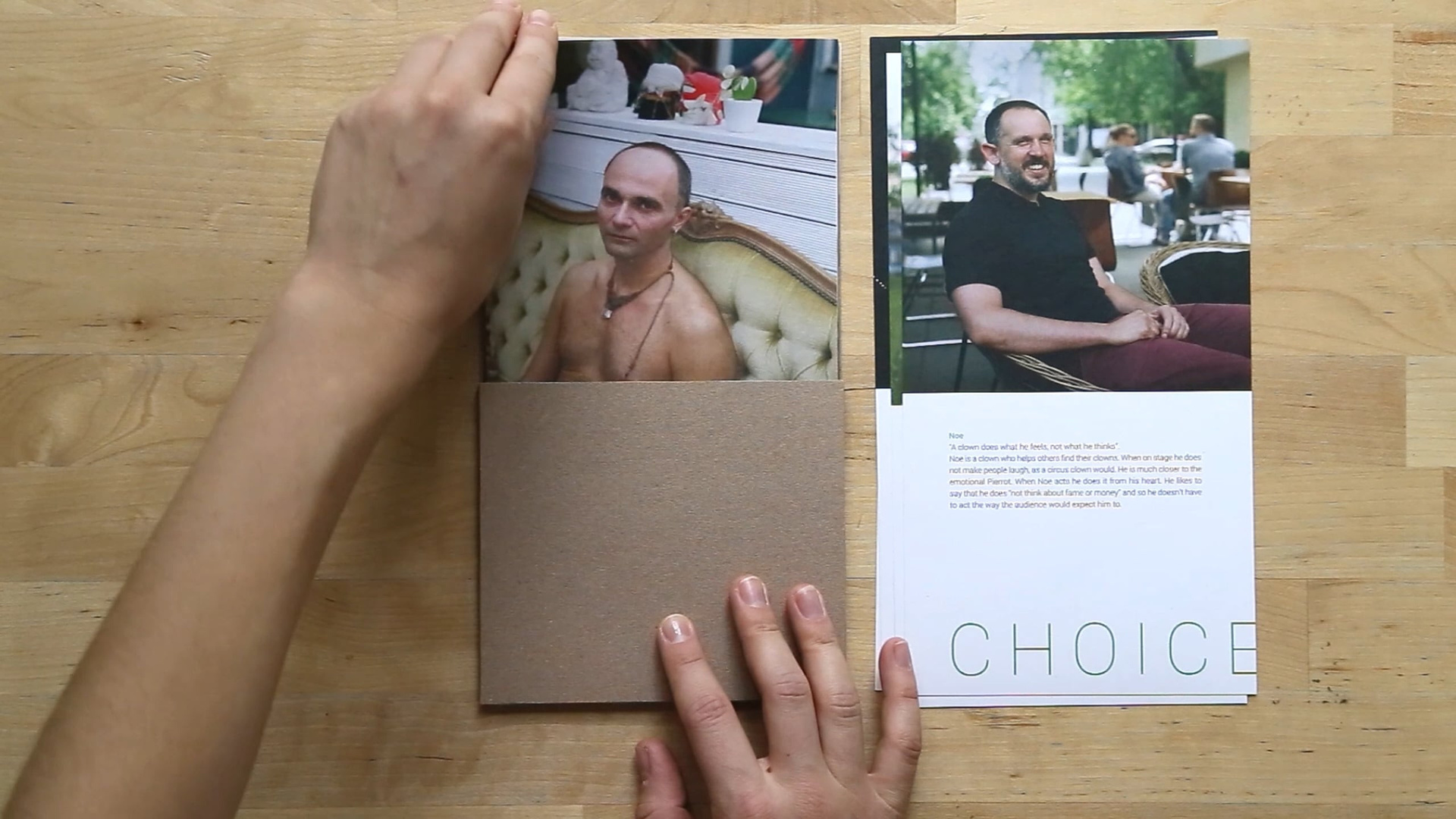

Conversation with creators
(Krzysztof Pacholak)
RU Первый вопрос будет к Инге, потому что Инга придумала тему этой публикации. Вы могли рассказать, о чем этот проект, а также раскрыть, что означает название “Выбор”?
EN The first question will be to Inga, because Inga came up with the topic of this publication. Could you tell us what this project is about, and also reveal what the name “Choice” means?
(Inga)
RU Моя книга о борьбе с потребительством. Почему я выбрал это название? Потому что книга состоит из портретов и описаний людей, избравших жизненный путь, связанный с антипотребительством.
EN My book is about the fight against consumerism. Why did I choose this name? Because the book consists of portraits and descriptions of people who have chosen a life path associated with anti-consumerism.
(Krzysztof Pacholak)
RU Как вы нашли этих людей? Инга добралась до них в Минске и Витебске, а Камила в Польше, в основном в Варшаве. Кто ваши герои?
EN How did you find these people? Inga reached them in Minsk and Vitebsk, and Kamila in Poland, mainly in Warsaw. Who are your heroes?
(Inga)
RU Вместе с моей подругой, которая является одним из персонажей фотокниги, мы начали поиски, и она дала мне контакт белорусского портала, через который я нашла дальнейшие контакты.
EN Together with my friend, who is one of the characters in the photo book, we started searching, and she gave me a contact of the Belarusian portal, through which I found further contacts.
(Kamila)
RU Искала своих героев через друзей и знакомых друзей, распуская слухи, что делаю такой проект. В основном все мои герои из Варшавы.
EN I was looking for my heroes through friends and acquaintances, spreading rumors that I was doing such a project. Basically all my heroes from Warsaw.
(Krzysztof Pacholak)
RU Ваши фотографии очень похожи — как это возможно, что вы не знали друг друга раньше и вдруг сделали портреты в очень похожем стиле. Вы не соглашались на это, не так ли?
EN Your photos are very similar — how is it possible that you did not know each other before and suddenly took portraits in a very similar style. You didn’t agree to this, did you?
(Kamila)
RU Мы немного встречались, совсем немного. У нас обоих были портреты среднего формата в портфолио, на фотографиях, и нам обоим нравилось делать такие фотографии. Делая этот проект, думая о его форме, мы решили, что выберем один и тот же стиль, чтобы он был последовательным. Во время фотосъемки, когда мы показывали друг другу первые попытки, оказалось, что эти снимки похожи и нам это понравилось.
EN We met a little, just a little. We both had medium format portraits in our portfolios, in photographs, and we both enjoyed taking those photographs. While doing this project, thinking about its form, we decided that we would choose the same style so that it would be consistent. During the shooting, when we showed each other the first attempts, it turned out that these pictures are similar and we liked it.
(Krzysztof Pacholak)
RU Вы должны признать, что это не классическая фотокнига. Вопрос в том, можно ли это вообще назвать фотокнигой? По какой причине вы остановились на этой форме?
EN You have to admit that this is not a classic photo book. The question is, can it even be called a photobook? Why did you choose this form?
(Kamila)
RU Мы хотели обратиться к форме листовки, которая связана с пропагандой, например, здорового образа жизни. Я хочу, чтобы этот антипотребительский подход продвигался, чтобы показать его в привлекательной форме. Не как что-то нишевое, не грустные люди, которые от чего-то отказываются. Мы хотели показать красочный, классный дизайн, который был бы привлекательным. Форма также относится к названию (выбор = выбор) — так что вы можете либо выбрать одну из карт и вдохновиться ею, либо выбрать свой собственный образ жизни таким образом. Слово “выбор” также было ключевым в драфте чемпионов, потому что каждый чемпион должен был сделать выбор. Антипотребительство должно было быть сознательным выбором, не навязанным жизнью, судьбой. Отказ от чего-то, чтобы получить что-то взамен.
EN We wanted to turn to the form of a leaflet, which is related to promoting, for example, a healthy lifestyle. I want this anti-consumer approach to be promoted in an attractive way. Not like something niche, not sad people who give up something. We wanted to show a colorful, cool design that was attractive. The shape also refers to the name (choice = choice) — so you can either choose one of the cards and be inspired by it, or choose your own lifestyle in this way. The word “choice” was also key in the champion draft because every champion had to make a choice. Anti-consumerism should have been a conscious choice, not imposed by life, fate. Giving up something in order to get something in return.
About the project
Polis (h) Photo Lab: A Unique International Collaboration
Dates: 1 February — 23 October 2016
Locations: Vitebsk (Belarus), Minsk (Belarus), Warsaw (Poland)
The Polis (h) Photo Lab was a creative and cultural project that connected photographers from Belarus and Poland. It gave them the chance to work together, learn from top professionals, and create photobooks that explored meaningful stories. Organized by the Association of Creative Initiatives “ę” and Vitebsk4Me, this program focused on helping photographers grow creatively and professionally.
Participants, including Inga Makeyeva, were chosen through a competitive application process that looked for creative ideas and motivation rather than just technical skills. The project ran for nine months and included workshops, discussions, and hands-on work. It began in Vitebsk, Belarus, where photographers attended sessions on storytelling and building visual narratives. These workshops were led by experts like Chris Niedenthal, a famous documentary photographer, and Ania Nałęcka, a designer known for her photobooks.
In May 2016, participants met in Vitebsk to share their ideas and early photographs. They discussed their projects with mentors and other participants, receiving feedback to improve their work. These meetings helped shape their projects and gave them clear directions for the next steps.
The most intense part of the project happened during a nine-day Photocamp in July, also near Vitebsk. During this time, participants worked full-time to finalize their photobooks. They chose the best photos, worked on the stories behind them, and collaborated with graphic designer Martyna Wyrzykowska to create professional layouts. The atmosphere encouraged teamwork, and the photographers supported each other while learning from their mentors, including Jan Brykczyński from Sputnik Photos.
Inga’s photobook, titled Choice, explored themes of sustainability and consumer behavior. Along with her co-author, Kamila Dąbrowska, she created a powerful visual story that reflected the project’s goals. The book was professionally designed by Martyna Wyrzykowska and printed in Poland, showcasing the skills and dedication of its creators.
The project ended with presentations of the photobooks in Vitebsk on 9 September 2016 at Gallery “Stalouka XYZ” and later in Warsaw on 23 October 2016 at “barStudio.” These events were attended by the public, other photographers, and cultural figures. Inga’s work gained recognition and was later exhibited at the TIFF Festival in Wroclaw, Poland, in 2018.
The Polis (h) Photo Lab project was supported by notable organizations, including the Ministry of Culture and National Heritage of the Republic of Poland and the Polish-American Freedom Foundation through the RITA program.
Through Polis (h) Photo Lab, Inga gained valuable experience in teamwork, storytelling, and professional presentation. She also had the opportunity to work with talented mentors and peers, which helped her grow as a photographer and develop new skills that continue to influence her work today.
Photography: Inga Makeyeva, Kamila Dąbrowska
Text: Inga Makeyeva, Kamila Dąbrowska
Translation: Hanna Darafeichyk, Agnieszka Wasowska, Raman Voranau, Dominik Mosiczuk
Artistic Supervision: Krzysztof Pacholak
Collaboration: Agnieszka Pajączkowska
Graphic Design: Kamila Dąbrowska
This publication was created as part of the Polis (h) Photo Lab project.
Organizers:
- Association of Creative Initiatives “ę” (Warsaw, Poland)
- Vitebsk4Me (Vitebsk, Belarus)
Project Coordinators:
- Dominik Mosiczuk (Association of Creative Initiatives “ę”)
- Volha Bizikava (Vitebsk4Me)
Partners:
- Sputnik Photos
- Art Pub Torvald
Sponsors:
- The project and publication received financial support from the Ministry of Culture and National Heritage of Poland.
- Additional financial support was provided by the Capital City of Warsaw and the Education for Democracy Foundation within the RITA — “Region in Transition” Program, financed by the Polish-American Freedom Foundation.
This publication is published under a Creative Commons license: Attribution — NonCommercial — NoDerivatives 4.0 International (CC BY-NC-ND 4.0).
Learn more: www.polishphotolab.e.org.pl
photos of the book: Krzysztof Pacholak

